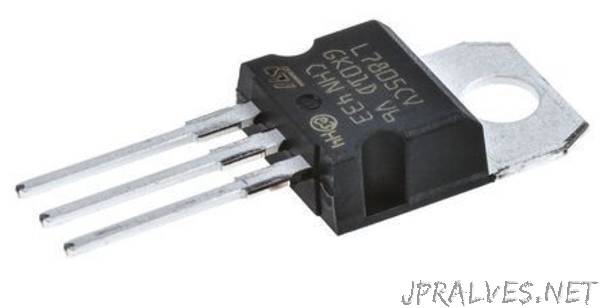
“Voltage regulators are one of the first electronic components you get introduced to as a hobbyist. Really useful when starting out, it simply takes a voltage that is too high, and reduces it down to a set voltage that you want, usually defined by the component. Solves the problem of having batteries or power supplies being a different voltage to the thing you are powering (such as your Arduino), and at as little as 50p from ebay they are easily acquired. Sounds like a great solution, but there is an issue, they are terribly inefficient. They are known to get very hot when used at high currents, and often need hefty heatsinks to stop the magic smoke from being released. To demonstrate why they get so hot we need to think about what happens during use. Remembering Kirchoff, the current going into a system is the same as the current going out of the system. If we use a simplified version of the regulator, the only thing this device changes is the voltage of the output. Due to the minimal current lost powering the circuit we assume the vast majority of power lost is in heat. Using the basic equation of:
Power (W) = Voltage (V) x Current (I)
So if we use an example of the LM7805 made by On Semiconductor (previously Fairchild) that can regulate 5V at 1A. It’s a pretty standard component, and is very typical of a voltage regulator.
If we use a 9V input the power going in is 9V x 1A = 9W.
The output power is 5V x 1A = 5W.
This means that there is 4W of power being dissipated from the regulator as wasted heat. This is a large amount when considering the size of the packages available. When thinking about problems excessive heat can cause in a circuit, it can quite easily damage itself and other components around it when not designed properly. It is why there are often big chunks of aluminium attached to the back of the components to act as a heat sink.”
